-
Breaking barriers by interfacial charge transfer Nat. Nanotechnol. (IF 38.1) Pub Date : 2024-07-25 Youngwook Kim
-
Competing light extraction strategies in perovskite light-emitting diodes Nat. Nanotechnol. (IF 38.1) Pub Date : 2024-07-25 Guanding Mei, Kai Wang, Xiao Wei Sun
-
A quantum sensor for atomic-scale electric and magnetic fields Nat. Nanotechnol. (IF 38.1) Pub Date : 2024-07-25 Taner Esat, Dmitriy Borodin, Jeongmin Oh, Andreas J. Heinrich, F. Stefan Tautz, Yujeong Bae, Ruslan Temirov
-
Oral administration of garlic-derived nanoparticles improves cancer immunotherapy by inducing intestinal IFNγ-producing γδ T cells Nat. Nanotechnol. (IF 38.1) Pub Date : 2024-07-25 Jialu Xu, Yue Yu, Yue Zhang, Huaxing Dai, Qianyu Yang, Beilei Wang, Qingle Ma, Yitong Chen, Fang Xu, Xiaolin Shi, Zhuang Liu, Chao Wang
-
Charge-transfer contacts for the measurement of correlated states in high-mobility WSe2 Nat. Nanotechnol. (IF 38.1) Pub Date : 2024-07-25 Jordan Pack, Yinjie Guo, Ziyu Liu, Bjarke S. Jessen, Luke Holtzman, Song Liu, Matthew Cothrine, Kenji Watanabe, Takashi Taniguchi, David G. Mandrus, Katayun Barmak, James Hone, Cory R. Dean
-
Deterministic switching of perpendicular magnetization by out-of-plane anti-damping magnon torques Nat. Nanotechnol. (IF 38.1) Pub Date : 2024-07-24 Fei Wang, Guoyi Shi, Dongsheng Yang, Hui Ru Tan, Chenhui Zhang, Jiayu Lei, Yuchen Pu, Shuhan Yang, Anjan Soumyanarayanan, Mehrdad Elyasi, Hyunsoo Yang
-
Third-order nonlinear Hall effect in a quantum Hall system Nat. Nanotechnol. (IF 38.1) Pub Date : 2024-07-24 Pan He, Hiroki Isobe, Gavin Kok Wai Koon, Jun You Tan, Junxiong Hu, Jingru Li, Naoto Nagaosa, Jian Shen
-
Electrically tunable space–time metasurfaces at optical frequencies Nat. Nanotechnol. (IF 38.1) Pub Date : 2024-07-24 Jared Sisler, Prachi Thureja, Meir Y. Grajower, Ruzan Sokhoyan, Ivy Huang, Harry A. Atwater
-
Monolithic three-dimensional integration of complementary two-dimensional field-effect transistors Nat. Nanotechnol. (IF 38.1) Pub Date : 2024-07-23 Rahul Pendurthi, Najam U Sakib, Muhtasim Ul Karim Sadaf, Zhiyu Zhang, Yongwen Sun, Chen Chen, Darsith Jayachandran, Aaryan Oberoi, Subir Ghosh, Shalini Kumari, Sergei P. Stepanoff, Divya Somvanshi, Yang Yang, Joan M. Redwing, Douglas E. Wolfe, Saptarshi Das
-
A bispecific nanosystem activates endogenous natural killer cells in the bone marrow for haematologic malignancies therapy Nat. Nanotechnol. (IF 38.1) Pub Date : 2024-07-23 Yanqin Zhang, Yanfang Deng, Yuewen Zhai, Yu Li, Yuting Li, Juequan Li, Yueqing Gu, Siwen Li
-
High-resolution three-dimensional imaging of topological textures in nanoscale single-diamond networks Nat. Nanotechnol. (IF 38.1) Pub Date : 2024-07-23 D. Karpov, K. Djeghdi, M. Holler, S. Narjes Abdollahi, K. Godlewska, C. Donnelly, T. Yuasa, H. Sai, U. B. Wiesner, B. D. Wilts, U. Steiner, M. Musya, S. Fukami, H. Ohno, I. Gunkel, A. Diaz, J. Llandro
-
Magnetic-field-driven targeting of exosomes modulates immune and metabolic changes in dystrophic muscle Nat. Nanotechnol. (IF 38.1) Pub Date : 2024-07-22 Chiara Villa, Valeria Secchi, Mirco Macchi, Luana Tripodi, Elena Trombetta, Desiree Zambroni, Francesco Padelli, Michele Mauri, Monica Molinaro, Rebecca Oddone, Andrea Farini, Antonella De Palma, Laura Varela Pinzon, Federica Santarelli, Roberto Simonutti, PierLuigi Mauri, Laura Porretti, Marcello Campione, Domenico Aquino, Angelo Monguzzi, Yvan Torrente
-
Even-integer quantum Hall effect in an oxide caused by a hidden Rashba effect Nat. Nanotechnol. (IF 38.1) Pub Date : 2024-07-22 Jingyue Wang, Junwei Huang, Daniel Kaplan, Xuehan Zhou, Congwei Tan, Jing Zhang, Gangjian Jin, Xuzhong Cong, Yongchao Zhu, Xiaoyin Gao, Yan Liang, Huakun Zuo, Zengwei Zhu, Ruixue Zhu, Ady Stern, Hongtao Liu, Peng Gao, Binghai Yan, Hongtao Yuan, Hailin Peng
-
Multimodal smart systems reprogramme macrophages and remove urate to treat gouty arthritis Nat. Nanotechnol. (IF 38.1) Pub Date : 2024-07-17 Jingxin Xu, Mingjun Wu, Jie Yang, Dezhang Zhao, Dan He, Yingju Liu, Xiong Yan, Yuying Liu, Daojun Pu, Qunyou Tan, Ling Zhang, Jingqing Zhang
-
Single-cavity loss-enabled nanometrology Nat. Nanotechnol. (IF 38.1) Pub Date : 2024-07-17 Jipeng Xu, Yuanhao Mao, Zhipeng Li, Yunlan Zuo, Jianfa Zhang, Biao Yang, Wei Xu, Ning Liu, Zhi Jiao Deng, Wei Chen, Keyu Xia, Cheng-Wei Qiu, Zhihong Zhu, Hui Jing, Ken Liu
-
Selective stimulation of calcium signalling pathways in astrocytes with graphene electrodes Nat. Nanotechnol. (IF 38.1) Pub Date : 2024-07-16
-
Electricity generated from upstream proton diffusion Nat. Nanotechnol. (IF 38.1) Pub Date : 2024-07-15 Pengfei Wang, Tingxian Li
-
A magneto-mechanical genetics toolbox for in vivo neuromodulation Nat. Nanotechnol. (IF 38.1) Pub Date : 2024-07-15 Felix Leroy
-
Electricity generated by upstream proton diffusion in two-dimensional nanochannels Nat. Nanotechnol. (IF 38.1) Pub Date : 2024-07-15 Heyi Xia, Wanqi Zhou, Xinyue Qu, Wenbo Wang, Xiao Wang, Ruixi Qiao, Yongkang Zhang, Xin Wu, Chuang Yang, Baofu Ding, Ling-Yun Hu, Yang Ran, Kuang Yu, Sheng Hu, Jian-Feng Li, Hui-Ming Cheng, Hu Qiu, Jun Yin, Wanlin Guo, Ling Qiu
-
Real-time dynamics of angular momentum transfer from spin to acoustic chiral phonon in oxide heterostructures Nat. Nanotechnol. (IF 38.1) Pub Date : 2024-07-12 In Hyeok Choi, Seung Gyo Jeong, Sehwan Song, Sungkyun Park, Dong Bin Shin, Woo Seok Choi, Jong Seok Lee
-
Understanding epitaxial growth of two-dimensional materials and their homostructures Nat. Nanotechnol. (IF 38.1) Pub Date : 2024-07-10 Can Liu, Tianyao Liu, Zhibin Zhang, Zhipei Sun, Guangyu Zhang, Enge Wang, Kaihui Liu
-
Graphene oxide electrodes enable electrical stimulation of distinct calcium signalling in brain astrocytes Nat. Nanotechnol. (IF 38.1) Pub Date : 2024-07-10 Roberta Fabbri, Alessandra Scidà, Emanuela Saracino, Giorgia Conte, Alessandro Kovtun, Andrea Candini, Denisa Kirdajova, Diletta Spennato, Valeria Marchetti, Chiara Lazzarini, Aikaterini Konstantoulaki, Paolo Dambruoso, Marco Caprini, Michele Muccini, Mauro Ursino, Miroslava Anderova, Emanuele Treossi, Roberto Zamboni, Vincenzo Palermo, Valentina Benfenati
-
Fluoride dielectrics for 2D transistors Nat. Nanotechnol. (IF 38.1) Pub Date : 2024-07-08 Tibor Grasser, Michael Waltl, Theresia Knobloch
-
Topologically protected edge states for neuromorphic computing Nat. Nanotechnol. (IF 38.1) Pub Date : 2024-07-04
-
Selective and quasi-continuous switching of ferroelectric Chern insulator devices for neuromorphic computing Nat. Nanotechnol. (IF 38.1) Pub Date : 2024-07-04 Moyu Chen, Yongqin Xie, Bin Cheng, Zaizheng Yang, Xin-Zhi Li, Fanqiang Chen, Qiao Li, Jiao Xie, Kenji Watanabe, Takashi Taniguchi, Wen-Yu He, Menghao Wu, Shi-Jun Liang, Feng Miao
-
Photovoltaic nanocells for high-performance large-scale-integrated organic phototransistors Nat. Nanotechnol. (IF 38.1) Pub Date : 2024-07-04 Shen Zhang, Renzhong Chen, Derong Kong, Yiheng Chen, Wentao Liu, Dingding Jiang, Weiyu Zhao, Cheng Chang, Yingguo Yang, Yunqi Liu, Dacheng Wei
-
1D metals for 2D electronics Nat. Nanotechnol. (IF 38.1) Pub Date : 2024-07-03 Wouter Jolie, Thomas Michely
-
Integrated 1D epitaxial mirror twin boundaries for ultrascaled 2D MoS2 field-effect transistors Nat. Nanotechnol. (IF 38.1) Pub Date : 2024-07-03 Heonsu Ahn, Gunho Moon, Hang-gyo Jung, Bingchen Deng, Dong-Hwan Yang, Sera Yang, Cheolhee Han, Hyunje Cho, Youngki Yeo, Cheol-Joo Kim, Chan-Ho Yang, Jonghwan Kim, Si-Young Choi, Hongkun Park, Jongwook Jeon, Jin-Hong Park, Moon-Ho Jo
-
Very-large-scale integrated high quality factor nanoantenna pixels Nat. Nanotechnol. (IF 38.1) Pub Date : 2024-07-03 Varun Dolia, Halleh B. Balch, Sahil Dagli, Sajjad Abdollahramezani, Hamish Carr Delgado, Parivash Moradifar, Kai Chang, Ariel Stiber, Fareeha Safir, Mark Lawrence, Jack Hu, Jennifer A. Dionne
-
-
Electrically tunable giant Nernst effect in two-dimensional van der Waals heterostructures Nat. Nanotechnol. (IF 38.1) Pub Date : 2024-07-02 Gabriele Pasquale, Zhe Sun, Guilherme Migliato Marega, Kenji Watanabe, Takashi Taniguchi, Andras Kis
-
In vivo magnetogenetics for cell-type-specific targeting and modulation of brain circuits Nat. Nanotechnol. (IF 38.1) Pub Date : 2024-07-02 Seo-Hyun Choi, Jihye Shin, Chanhyun Park, Jung-uk Lee, Jaegyeong Lee, Yuko Ambo, Wookjin Shin, Ri Yu, Ju-Young Kim, Jungsu David Lah, Donghun Shin, Gooreum Kim, Kunwoo Noh, Wuhyun Koh, C. Justin Lee, Jae-Hyun Lee, Minsuk Kwak, Jinwoo Cheon
-
The gap between academic research on proton exchange membrane water electrolysers and industrial demands Nat. Nanotechnol. (IF 38.1) Pub Date : 2024-07-01 Hua Bing Tao, Han Liu, Kejie Lao, Yaping Pan, Yongbing Tao, Linrui Wen, Nanfeng Zheng
-
A DNA robotic switch with regulated autonomous display of cytotoxic ligand nanopatterns Nat. Nanotechnol. (IF 38.1) Pub Date : 2024-07-01 Yang Wang, Igor Baars, Ieva Berzina, Iris Rocamonde-Lago, Boxuan Shen, Yunshi Yang, Marco Lolaico, Janine Waldvogel, Ioanna Smyrlaki, Keying Zhu, Robert A. Harris, Björn Högberg
-
The future of two-dimensional semiconductors beyond Moore’s law Nat. Nanotechnol. (IF 38.1) Pub Date : 2024-07-01 Ki Seok Kim, Junyoung Kwon, Huije Ryu, Changhyun Kim, Hyunseok Kim, Eun-Kyu Lee, Doyoon Lee, Seunghwan Seo, Ne Myo Han, Jun Min Suh, Jekyung Kim, Min-Kyu Song, Sangho Lee, Minsu Seol, Jeehwan Kim
-
Regioselective epitaxial growth of metallic heterostructures Nat. Nanotechnol. (IF 38.1) Pub Date : 2024-06-25 Xuan Huang, Jie Feng, Shengnan Hu, Bingyan Xu, Mingsheng Hao, Xiaozhi Liu, Yan Wen, Dong Su, Yujin Ji, Youyong Li, Yinshi Li, Yucheng Huang, Ting-Shan Chan, Zhiwei Hu, Na Tian, Qi Shao, Xiaoqing Huang
-
Projected performance of Si- and 2D-material-based SRAM circuits ranging from 16 nm to 1 nm technology nodes Nat. Nanotechnol. (IF 38.1) Pub Date : 2024-06-21 Yu-Cheng Lu, Jing-Kai Huang, Kai-Yuan Chao, Lain-Jong Li, Vita Pi-Ho Hu
-
Resolvin D1 delivery to lesional macrophages using antioxidative black phosphorus nanosheets for atherosclerosis treatment Nat. Nanotechnol. (IF 38.1) Pub Date : 2024-06-19 Zhongshan He, Wei Chen, Kuan Hu, Yaoyao Luo, Wanqin Zeng, Xi He, Tingting Li, Jiang Ouyang, Yongjiang Li, Lin Xie, Yiding Zhang, Qin Xu, Shuping Yang, Mengran Guo, Wei Zou, Yanfei Li, Lingjing Huang, Lu Chen, Xingcai Zhang, Qimanguli Saiding, Rui Wang, Ming-Rong Zhang, Na Kong, Tian Xie, Xiangrong Song, Wei Tao
-
Hype kills your story Nat. Nanotechnol. (IF 38.1) Pub Date : 2024-06-18
The use of hyperbole in scientific literature is increasing, undermining effective scientific communication.
-
Multidimensional vision sensors for information processing Nat. Nanotechnol. (IF 38.1) Pub Date : 2024-06-14 Zhaoqing Wang, Tianqing Wan, Sijie Ma, Yang Chai
-
Mitochondrial transplantation for ischemic heart disease Nat. Nanotechnol. (IF 38.1) Pub Date : 2024-06-11 Catherine Gorick, Anna Debski
-
Nutrient-delivery and metabolism reactivation therapy for melanoma Nat. Nanotechnol. (IF 38.1) Pub Date : 2024-06-11 Yang Chen, Chaochao Wang, Yelin Wu, Ya Wang, Yun Meng, Fan Wu, Huilin Zhang, Yuen Yee Cheng, Xingwu Jiang, Jieyun Shi, Huiyan Li, Peiran Zhao, Jinfeng Wu, Bin Zheng, Dayong Jin, Wenbo Bu
-
Versatile perovskites enable room-temperature topological polaritonics Nat. Nanotechnol. (IF 38.1) Pub Date : 2024-06-10 Helgi Sigurðsson, Barbara Piętka
-
Lipid nanoparticles target haematopoietic stem cells Nat. Nanotechnol. (IF 38.1) Pub Date : 2024-06-07 Dimitrios Bitounis, Mansoor M. Amiji
-
Polystyrene nanoparticles trigger aberrant condensation of TDP-43 and amyotrophic lateral sclerosis-like symptoms Nat. Nanotechnol. (IF 38.1) Pub Date : 2024-06-07 Hang Sun, Bingwei Yang, Qiong Li, Xiaokang Zhu, Erqun Song, Cong Liu, Yang Song, Guibin Jiang
-
Multiwalled boron nitride nanotubes with a strong nonlinear chiroptical response Nat. Nanotechnol. (IF 38.1) Pub Date : 2024-06-06
-
New dimensions for fluorescence-based barcoding in complex mixtures Nat. Nanotechnol. (IF 38.1) Pub Date : 2024-06-06 Thorsten Hugel
-
Vacuum levitation and motion control on chip Nat. Nanotechnol. (IF 38.1) Pub Date : 2024-06-06 Bruno Melo, Marc T. Cuairan, Grégoire F. M. Tomassi, Nadine Meyer, Romain Quidant
-
Strong chiroptical nonlinearity in coherently stacked boron nitride nanotubes Nat. Nanotechnol. (IF 38.1) Pub Date : 2024-06-06 Chaojie Ma, Chenjun Ma, Chang Liu, Quanlin Guo, Chen Huang, Guangjie Yao, Meiyun Li, Jiajie Qi, Biao Qin, Xin Sui, Jiacheng Li, Muhong Wu, Peng Gao, Wenlong Wang, Xuedong Bai, Zhipei Sun, Enge Wang, Hao Hong, Kaihui Liu
-
Towards realizing nano-enabled precision delivery in plants Nat. Nanotechnol. (IF 38.1) Pub Date : 2024-06-06 Gregory V. Lowry, Juan Pablo Giraldo, Nicole F. Steinmetz, Astrid Avellan, Gozde S. Demirer, Kurt D. Ristroph, Gerald J. Wang, Christine O. Hendren, Christopher A. Alabi, Adam Caparco, Washington da Silva, Ivonne González-Gamboa, Khara D. Grieger, Su-Ji Jeon, Mariya V. Khodakovskaya, Hagay Kohay, Vivek Kumar, Raja Muthuramalingam, Hanna Poffenbarger, Swadeshmukul Santra, Robert D. Tilton, Jason C.
-
Nanowires engineer naive T cells for immunotherapy Nat. Nanotechnol. (IF 38.1) Pub Date : 2024-05-27 Dragana Slavkovic-Lukic, Luca Gattinoni
-
Oral mitochondrial transplantation using nanomotors to treat ischaemic heart disease Nat. Nanotechnol. (IF 38.1) Pub Date : 2024-05-27 Ziyu Wu, Lin Chen, Wenyan Guo, Jun Wang, Haiya Ni, Jianing Liu, Wentao Jiang, Jian Shen, Chun Mao, Min Zhou, Mimi Wan
-
Virus-like structures for combination antigen protein mRNA vaccination Nat. Nanotechnol. (IF 38.1) Pub Date : 2024-05-27 Jingjing Zhang, Yanmei Li, Fengyuan Zeng, Changyong Mu, Change Liu, Lichun Wang, Xiaowu Peng, Liping He, Yanrui Su, Hongbing Li, An Wang, Lin Feng, Dongxiu Gao, Zhixiao Zhang, Gang Xu, Yixuan Wang, Rong Yue, Junbo Si, Lichun Zheng, Xiong Zhang, Fuyun He, Hongkun Yi, Zhongshu Tang, Gaocan Li, Kaili Ma, Qihan Li
-
Topological valley Hall polariton condensation Nat. Nanotechnol. (IF 38.1) Pub Date : 2024-05-24 Kai Peng, Wei Li, Meng Sun, Jose D. H. Rivero, Chaoyang Ti, Xu Han, Li Ge, Lan Yang, Xiang Zhang, Wei Bao
-
Bone-marrow-homing lipid nanoparticles for genome editing in diseased and malignant haematopoietic stem cells Nat. Nanotechnol. (IF 38.1) Pub Date : 2024-05-23 Xizhen Lian, Sumanta Chatterjee, Yehui Sun, Sean A. Dilliard, Stephen Moore, Yufen Xiao, Xiaoyan Bian, Kohki Yamada, Yun-Chieh Sung, Rachel M. Levine, Kalin Mayberry, Samuel John, Xiaoye Liu, Caroline Smith, Lindsay T. Johnson, Xu Wang, Cheng Cheng Zhang, David R. Liu, Gregory A. Newby, Mitchell J. Weiss, Jonathan S. Yen, Daniel J. Siegwart
-
Combining two-dimensional infrared spectroscopy with atomic force microscopy Nat. Nanotechnol. (IF 38.1) Pub Date : 2024-05-22
-
Perovskites light a path forward Nat. Nanotechnol. (IF 38.1) Pub Date : 2024-05-20
Advances in nanoscale engineering bring us closer to unlocking the full potential of perovskite light-emitting diodes for future lighting and display applications.
-
Inelastic electron tunnelling induces anomalous light emission Nat. Nanotechnol. (IF 38.1) Pub Date : 2024-05-17
-
Single-molecule fluorescence multiplexing by multi-parameter spectroscopic detection of nanostructured FRET labels Nat. Nanotechnol. (IF 38.1) Pub Date : 2024-05-15 Jiachong Chu, Ayesha Ejaz, Kyle M. Lin, Madeline R. Joseph, Aria E. Coraor, D. Allan Drummond, Allison H. Squires
-
Atomic-force-microscopy-based time-domain two-dimensional infrared nanospectroscopy Nat. Nanotechnol. (IF 38.1) Pub Date : 2024-05-15 Qing Xie, Yu Zhang, Eli Janzen, James H. Edgar, Xiaoji G. Xu









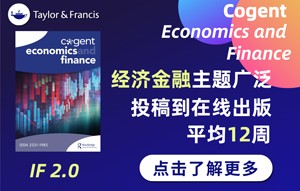
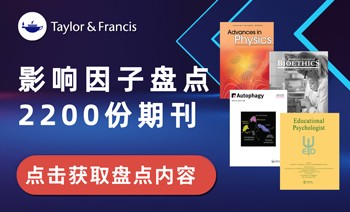
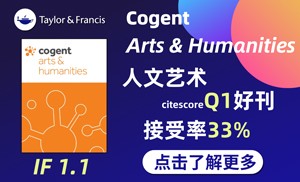
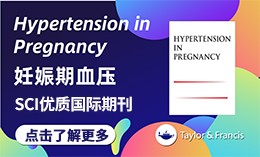




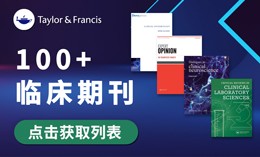














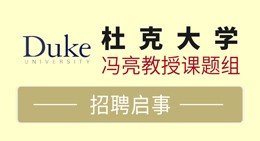
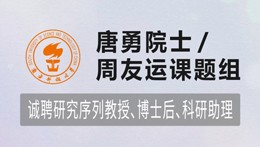
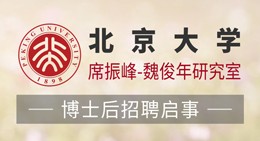



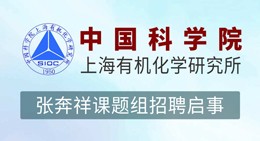
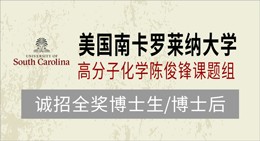
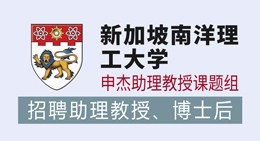



 京公网安备 11010802027423号
京公网安备 11010802027423号